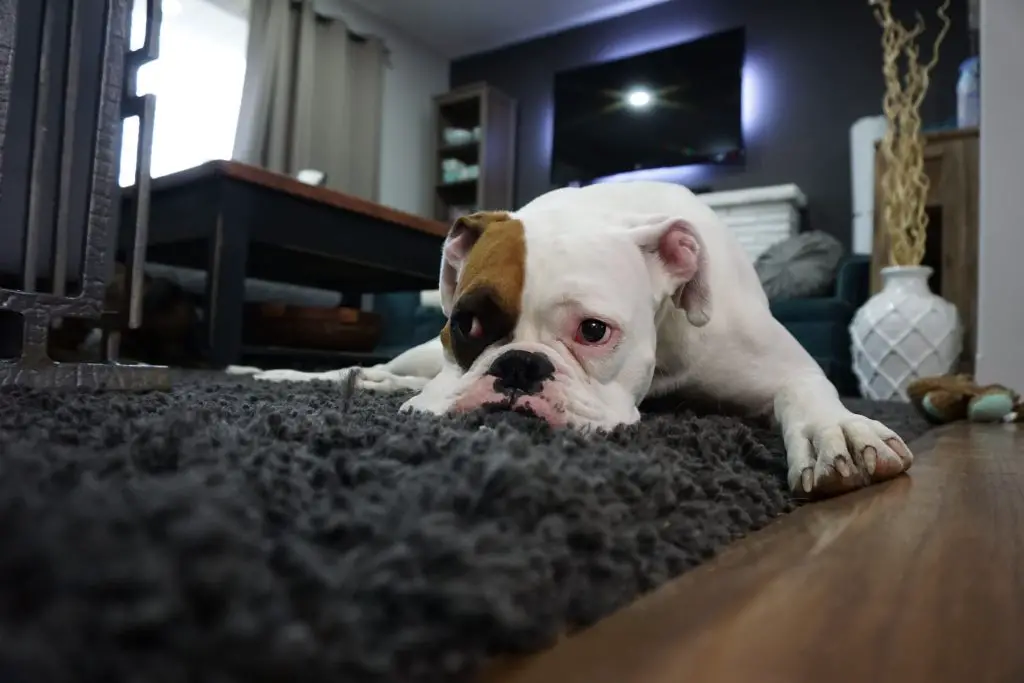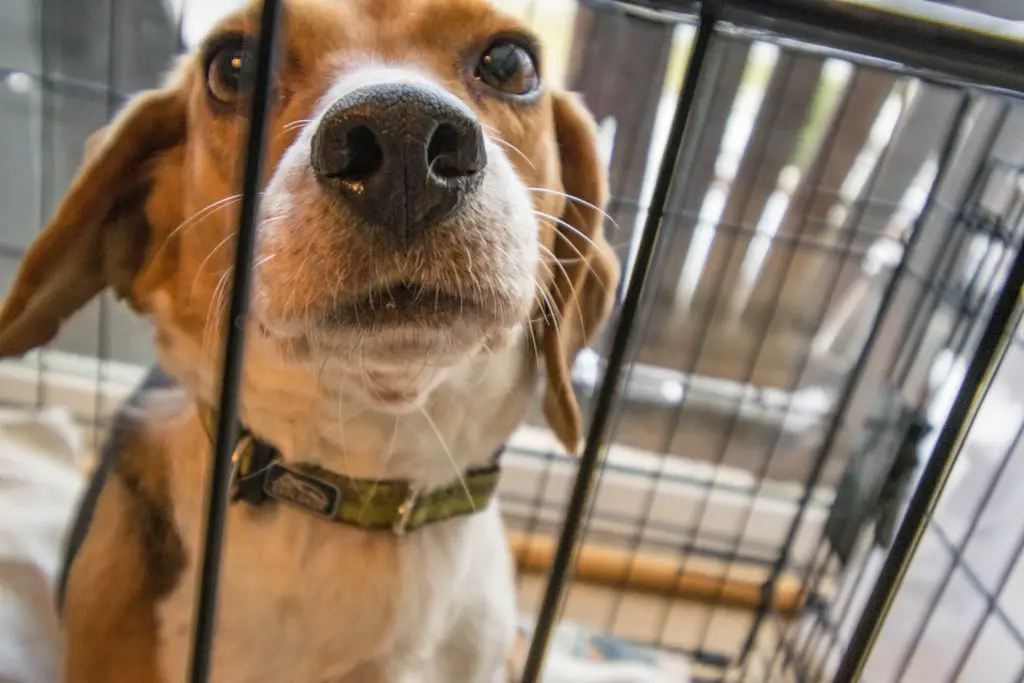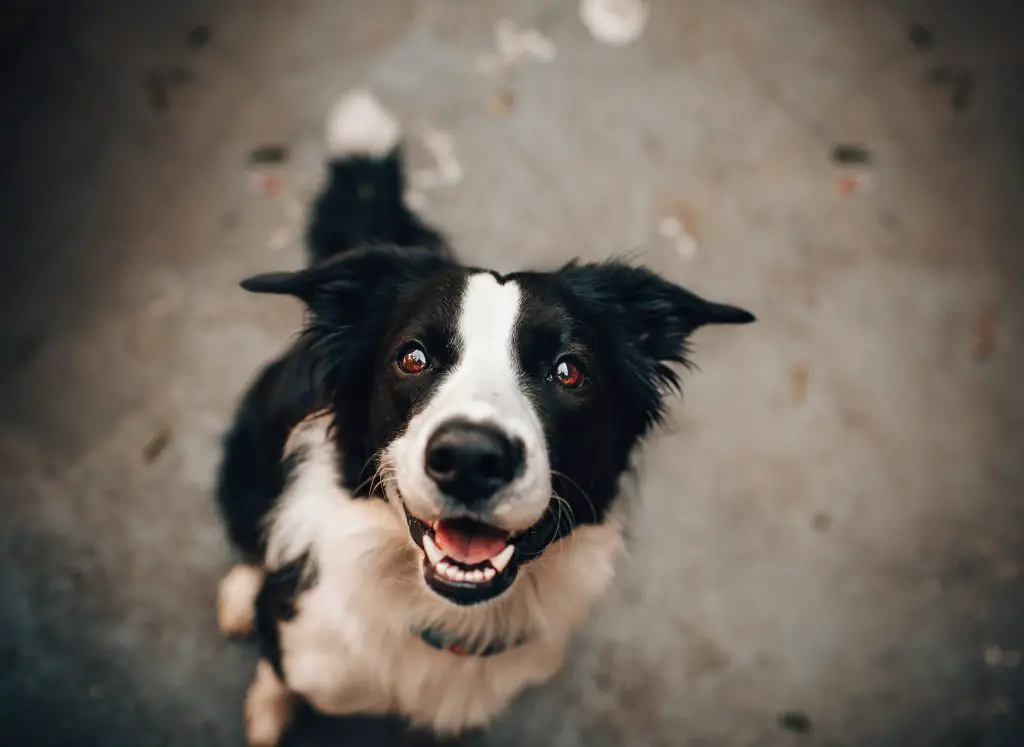If your dog displays anxiety symptoms or even any form of stress, then they’re probably struggling with separation anxiety. If this anxiety doesn’t get treated as soon as possible, then the consequences are going to be dire.
Crate training usually helps with many behavioral issues, so no wonder that many people seem to ask how to crate train a dog with separation anxiety?
Today, I am going to answer this question and tell you if this behavioral training tool is suitable for your dog’s anxiety?

Table of Contents
How to crate train a dog with separation anxiety?
What is separation anxiety and what is it characterized by?
First off, let us define separation anxiety in dogs. Surprisingly, separation anxiety is often described as a behavioral problem rather than a mental illness, which personally surprised me.

It is characterized by barking, whining, excessive drooling, and other destructive behaviors. It kind of makes sense why it is referred to as a behavioral problem, but why not categorize it under mental health disorders?
Well, it turns out that a lot of the dogs displaying symptoms of separation anxiety have what is called Simulated Separation anxiety.
Though the symptoms appear to be identical, the dogs’ cases significantly differ. Dogs with simulated separation anxiety are displaying such behaviors because we’ve unintentionally responded and rewarded these actions in the past.
They’re not really scared. They’re just super smart and a bit manipulative. They’ve noticed that if they act in such behaviors, we’ll worry and respond to them. Unfortunately, in doing so, we’ve gone against one of the fundamental principles in dog training, which is positive reinforcement.

How to crate train a dog with separation anxiety?
What is positive reinforcement?
Positive reinforcement is the act of rewarding and acknowledging good behavior and ignoring undesired or bad actions. This tool gets used in almost all of the different dog training due to its effectiveness and safeness.

How to crate train a dog with separation anxiety?
Why do dogs develop simulative separation anxiety?
You might say that you’ve never given treats to your dog when they barked loudly for no reason. Well, I am glad you didn’t do that, but not all rewards come in the form of treats. If you drop what you’re doing to pat them or play with them for a bit, you’ve rewarded their undesired actions.
Now, your dog knows that if they bark or do anything undesired, they will get more attention, and thus, their behavior will worsen with time.
If that’s your dog’s case, and they have simulated separation anxiety, then crate training them is going to help them improve.

I wouldn’t recommend starting right away with crates if your dog is struggling with real separation anxiety. I will be posting more about the real separation anxiety in dogs very soon, so stay tuned for that.

How to crate train a dog with separation anxiety?
Let us start talking about how to crate train a dog with simulated separation anxiety. As always, it is always better to start crate training a puppy as soon as possible and as long as they’re eight weeks old or older. However, it is never too late to start, so never waste time pondering on all of your what ifs!
The most important thing to remember while crate training a dog is to start with baby steps. Avoid progressing quickly with the crate training because if you do so, you risk your dog developing confinement phobia. Confinement phobia is one of the biggest causes of real separation anxiety.
You can start by allowing your dog to have treats in their crate with the door left open. You want to make the crate your dog’s magical world, so you could try to make them have their food in it every day for a while. This way, they’ll start associating this place as an area they would like to spend their time in.
Kong toys are amazing because they’re a chewing toy that has food in it, so you could try that as well. If you’re looking for a detailed step by step guideline to crate train your dog, then I highly recommend you read my How to Crate Train A Dog | The Ultimate Guide blog post.
Of course, never leave your dog in the crate for too long, and keep their bathroom needs in mind. Since crate training plays an essential role in potty and house training, we don’t want the dog to soil their crates just because you wanted to leave them in there for a little bit longer.
The general rule states that the frequency of their bathroom needs is the same as their age in months.
So if your dog is three months old, then they need to go to the bathroom every three hours. Once they turn eight months old, then they only need to go every eight hours no matter how old they get. However, never leave your dog in the crate for more than four hours at a time.
But what about when you’re about to leave the house for a while? I just talked about why you shouldn’t leave your dog in their crates if you leave the house for many hours, which you can read here.

How to crate train a dog with separation anxiety?
Change your response to your dog’s actions
Well, we’ll have to undo the damage that we created when we responded to their barks upon leaving and arriving home.
Why?
When you make a big fuss about returning home and immediately greeting your puppy, your indirectly creating in their mind that because you’re so happy and relieved when you come back, so you must not feel that way when you leave. This makes them worry.

So when you come back home, don’t respond to your dog until they’ve calmed down. This way, you’re not rewarding their destructive behavior. If you’re carrying your laptop, go put it in its place and wash your hands. After that, if your dog has calmed down, then you can pat and greet them, but don’t do it with so much enthusiasm.
How to crate train a dog with separation anxiety?
The golden tip
My last tip is something that you could do whenever they start acting out for the sake of attention or even if you’re walking out the door and you want them to calm down and not bark while you’re gone. This golden tip is to make a serious connection when they’re asking for attention.
If you’re a bit confused and feel like I am saying what I just spent paragraphs explaining why you should do the opposite of that, then allow me to clarify my current statement.
You’re going to make a serious connection by looking into your dog’s eye for a while, and tell them that you see them and you hear them. You acknowledge that they’re feeling down because you’re about to leave or because your busy, but unfortunately you can stay with them right now.
This way, the dogs feel acknowledged, but you haven’t complied with what they want, and you haven’t rewarded their bad behavior.

That’s it for today’s post. Does your dog have separation anxiety? If they do, which type do they have?
Feel free to share with us your personal experiences. Also, if you have any questions, then leave them in the comments down below.

